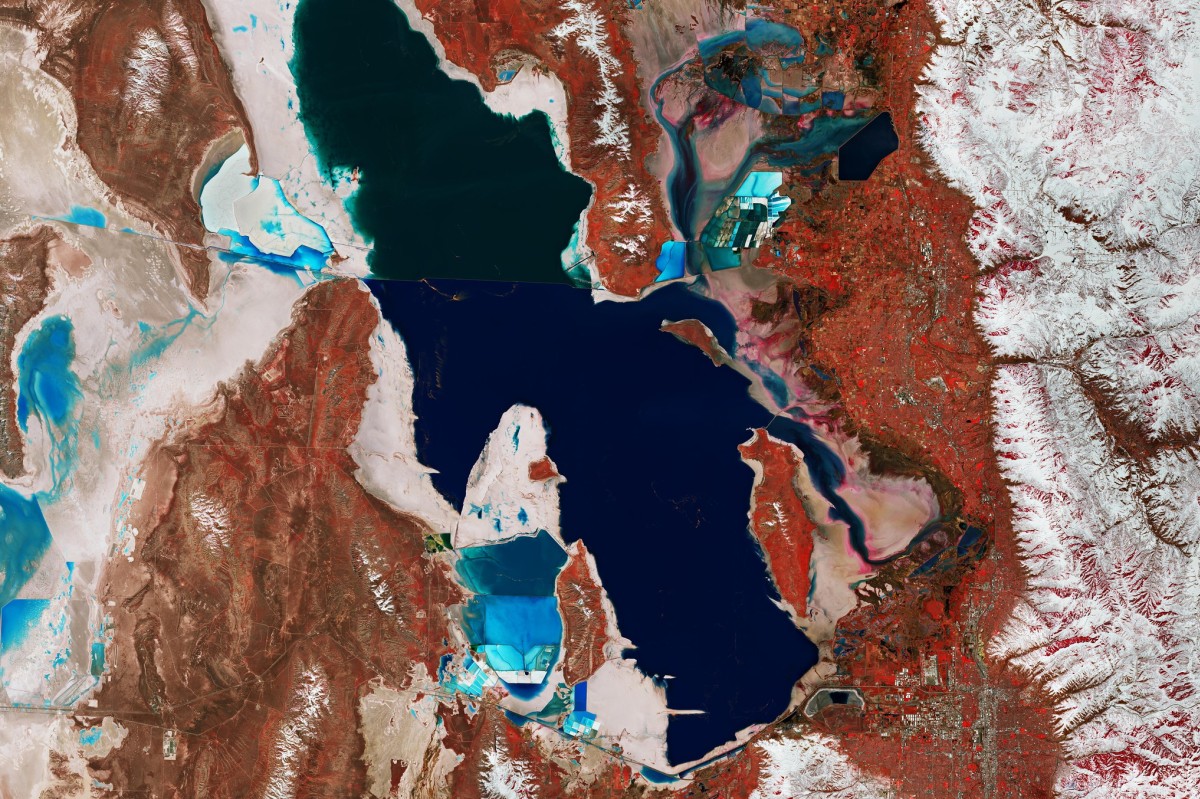Climate change could deliver more sediment and pollution to the San Francisco Bay-Delta
“Climate change could deliver more silt, sand and pollution to the San Francisco Bay-Delta, along with a mixed bag of other potential consequences and benefits, according to a new study in the AGU journal Water Resources Research, which publishes research articles and commentaries providing a broad understanding of the role of water in Earth’s natural systems. By running models of future climate change scenarios, researchers with the U.S. Geological Survey found that as air temperatures increase by 1.6 to 5.3 degrees Celsius by the end of the 21st century, with varying changes in rainfall, streams and rivers draining through the Sacramento Valley may see higher peak streamflows. Future storms will not necessarily bring more water overall, just more water during shorter time periods. Those higher streamflows will carry 39% to 69% more sediment down to the Bay-Delta by the end of the century, according to the researchers’ models. … ” Read more from YubaNet here: Climate change could deliver more sediment and pollution to the San Francisco Bay-Delta
Improving our odds
“For the last few years, we’ve been conducting a study in the San Joaquin River for which we deploy multiple fyke traps in the spring and early summer to catch, tag, and release striped bass, black bass, and catfish species. One of the objectives of the study is to estimate the population abundance of these target species in the San Joaquin River, much like the California Department of Fish and Wildlife has been doing for striped bass in the Sacramento River since 1969. In order to calculate accurate population estimates, it is essential to tag and release as many fish as possible to improve the probability of recapturing a significant number of those tagged fish. There are several ways to increase the odds of capturing and recapturing the target species, such as using more fyke traps, sampling for a longer time, or increasing the efficiency of the trapping method (design a better trap). But one of our biggest hurdles is permitting constraints: we are only allowed to handle the targeted species when water temperature remains below a predetermined threshold. This temperature constraint is for the welfare of the fish to reduce stress and risk of mortality. … ” Read more from FishBio here: Improving our odds
Long-term study identifies desert plant’s response to climate change
“Brittlebush is a desert shrub that is adapting and showing a remarkable ability to respond to climate changes in water availability and temperatures, even in places like Death Valley, one of the hottest and driest places on the planet, according to a new published study. Over the past 20 years, Cal State Fullerton ecologist Darren R. Sandquist and scores of his students, in collaboration with University of Utah scientists, have studied the brittlebush, a common desert shrub with silvery leaves and showy small yellow flowers. Found throughout the Southwest and northern Mexico, the shrub can live up to 30 years. … ” Read more from CSUF here: Long-term study identifies desert plant’s response to climate change
Salmon subsidies get tossed aside
“It’s a wet January morning in 2020, and a forklift is hoisting a 900-kilogram block of frozen salmon overhead. With a crash, the mass of fish smashes onto the pavement. The carcasses scatter, and workers at the Clear Creek Hatchery in Olympia, Washington, set about piling them into a bin. These chinook are destined for the Nisqually River watershed, about an hour south of Seattle, Washington, where rain gear–clad schoolkids will toss the slippery, smelly fish into the Mashel River—a gruesome field trip activity with an ecological purpose. … ” Read more from Hakai Magazine here: Salmon subsidies get tossed aside
A map 15 years in the making illuminates a ‘Grand Canyon’ off California’s coast
“Just offshore from the small town of Moss Landing, Calif.—once an important West Coast fishing hub and now a center of oceanographic research—stretches one of the country’s most magnificent but little-known geologic features: Monterey Canyon. About the same size as the Grand Canyon in Arizona, its main channel is nearly 300 miles long. If you swam down the deepest part of the canyon, you would have dive 5,580 feet to get to the bottom. (The deepest part of the Grand Canyon is deeper, in comparison, but by just 430 feet). … ” Read more from Scientific American here: A map 15 years in the making illuminates a ‘Grand Canyon’ off California’s coast
How to study invasive species from space
“One way to study the Earth is from the ground. Another way is to study it from space. Bridget Taylor and colleagues found that they could monitor an invasive species using satellites, allowing them new means to better study these species and protect native environments. It could take months or years to monitor a large area for invasive species. Satellites would greatly speed up these processes. Early detection of invasive species can help stop their spread and further damage to native species. … ” Read more from EnviroBites here: How to study invasive species from space
If a forest burns in a fire, does it return to normal?
““When a forest burns in a wildfire, should we expect it to return as it was before?” Research scientist, Jonathan Coop, and his team pose this question. It addresses a critical conundrum in ecology, how do ecosystems recover from disturbance and why? Historically, forest scientists developed successional models, a timeline of when certain species return to an environment after a disturbance, such as a wildfire. We expect the sun-loving, fast-growing plants to come back first followed by the shade-tolerant, slow-growing species. But with a changing climate and thus unpredictable disturbances, the successional models may no longer be accurate. Scientists will need new models to accurately predict ecological recovery after disasters. … ” Read more from EnviroBites here: If a forest burns in a fire, does it return to normal?
A new study of ocean salinity finds substantial amplification of the global water cycle
“Water and its movements within or between atmosphere, land and ocean defines the global water cycle and is central to the climate system. Almost all weather and climate phenomena are in some way tied to the water cycle. Examples include extreme rainfall during thunderstorms, hurricanes and tropical cyclones, flooding, droughts, and sea level rise. Now, the water cycle is changing in important ways as the climate changes. Theory and models suggest that as the Earth is warming, the global water cycle is amplified, i.e., more water is evaporated from the ocean, and consequently, precipitation is increasing, as well. Yet the observational confirmation of this prediction has been difficult, since past changes of the water cycle are were poorly observed due to the difficulty of measuring global-scale evaporation and precipitation and the complexity of their spatial and temporal variability. ... ” Read more from PhysOrg here: A new study of ocean salinity finds substantial amplification of the global water cycle
Water warning as climate risks intensify: report
“Record temperatures are accelerating the rise of sea levels, melting glaciers and snow coverage and threatening the water supplies for billions, according to a major UN report Wednesday charting the “increasing and irreversible” impacts of climate change. The multi-agency United in Science report said the world had seen its warmest five years on record in the last five years, adding that extreme weather events bore “a clear fingerprint” of climate change. … ” Read more from Phys Org here: Water warning as climate risks intensify: report
Featured image credit: Great Salt Lake by European Space Agency
About Science News and Reports: This weekly feature, posted every Thursday, is a collection of the latest scientific research and reports with a focus on relevant issues to the Delta and to California water, although other issues such as climate change are sometimes included. Do you have an item to be included here? Submissions of relevant research and other materials is welcome. Email Maven




